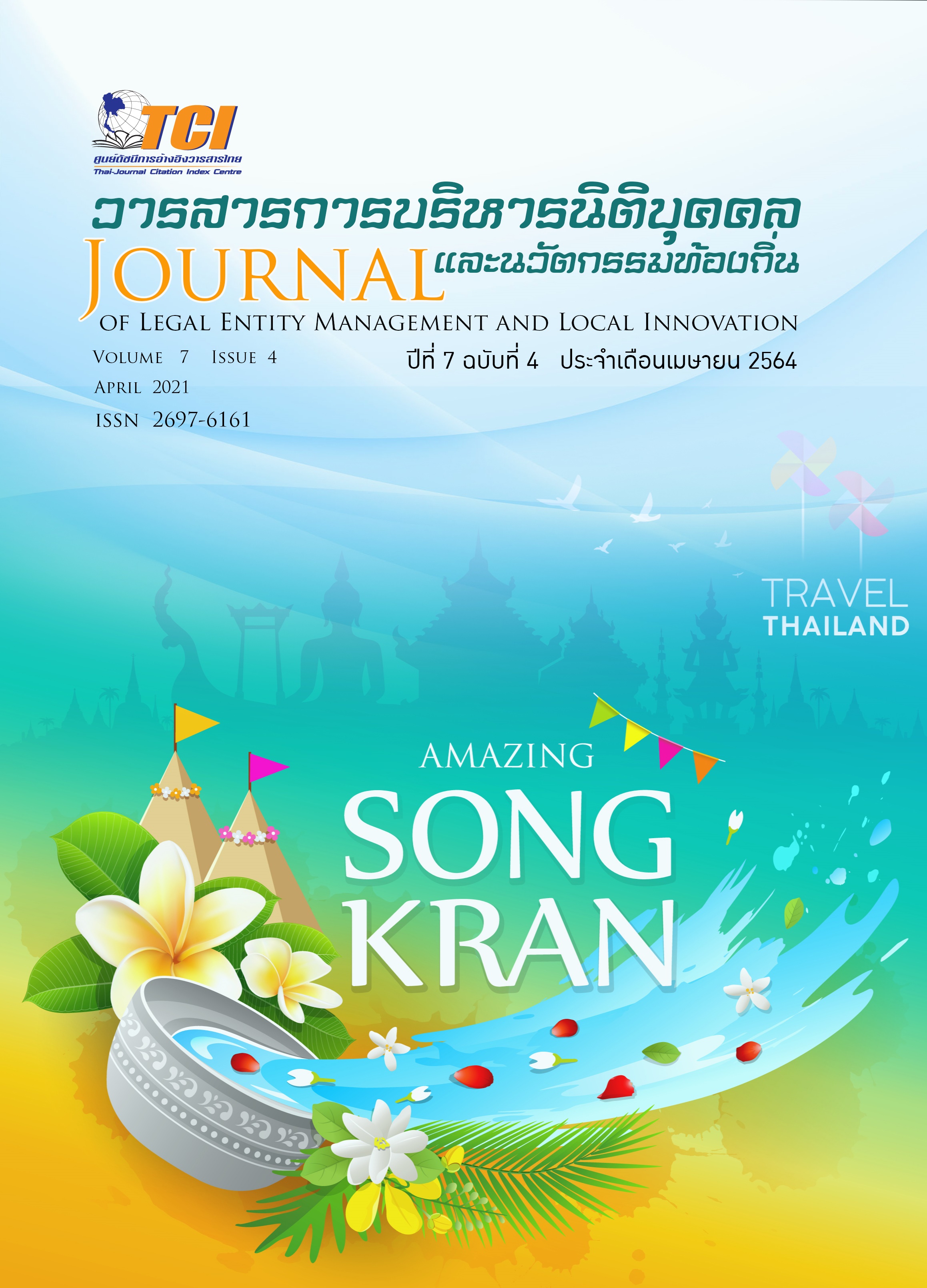The Need for Lifelong Education Promoting Activity in Huaijorakaemak Reservoir, Buri Ram Province
Keywords:
Need, Lifelong Learning Promotion Activities, Huaijorakaemak ReservoirAbstract
The objective of this research was to study the need of lifelong learning promotion activities for Huaijorakaemak reservoir in Buri Ram province. The research model Survey Research The data was collected from 2 groups. The first group was users who lived in Huaijorakaemak reservoir which covered three sub-districts as 6,549 people. The researcher applied the Taro Yamane Sample Size Table to determine population size by using the level of confidence at 95% and level of error at 5%. The obtained calculation result was 378 samples. The researcher decided to collect the data from 400 people through an accidental sampling method which applied questionnaires to gather information. The second group was service providers who were officers of six organizations that provided services or organized activities at Huaijorakaemak Reservoir area. The sample was selected by a purposive sampling method as one person of each organization for a total of six people. The data was collected by questionnaire and interview and analyzed through percentage, mean, and standard deviation. The research result presented that the users needed lifelong learning promotion activities for Huaijorakaemak reservoir at a high level in all activities (x ̅ = 4.40 ). The walk and run with nature study activity had the highest mean (x ̅ = 4.60 ). The content related to being an important water resource which was the highest need (x ̅ = 4.35). average level was the sustainable advantage utilization of water resources (x ̅ =4.50). The content related to biological status had the average need at a high level (x ̅ =4.34 ) and the most average sub-content was the biodiversity of forest (x ̅ =4.34. The lifelong learning promotion method which had a high level of need (x ̅ =4.41 ) and the highest average level was an educational tour (x ̅ =4.55 ). The learning support equipment which had the highest level (x ̅ =4.45 ) on both need and average was a bulletin board (x ̅ =4.60 ). In terms of service providers, the research results found that their need of lifelong learning promotion activities was at a high level in all activities (x ̅ =4.33). The walk and run with nature study activity received the highest average level (x ̅ = 4.60). The contents related to being an important water resource which was the highest (x ̅ =4.44) on both need and average level were the conservation on wetlands (x ̅ =4.67) and sustainable advantage utilization of water resources (x ̅ =4.67). The contents related to biological status which had the highest need (x ̅ =4.34 ) and average level were the knowledge, background, importance, related laws of non-hunting on wildlife (x ̅ =4.67). The lifelong learning promotion methods which had a high level of need (x ̅ =3.86 ) and the highest average level were statement and lecture through educator, expert, (x ̅ =4.33 ) and the use of video (x ̅ =4.33 ). The learning support equipment which had the highest level (x ̅ =4.04) on both need and average was an electronic media (x ̅ =4.50 ). The managements with the highest (x ̅ =4.42) need and average level were media and equipment used for the activities ( x ̅ =4.67 ).


